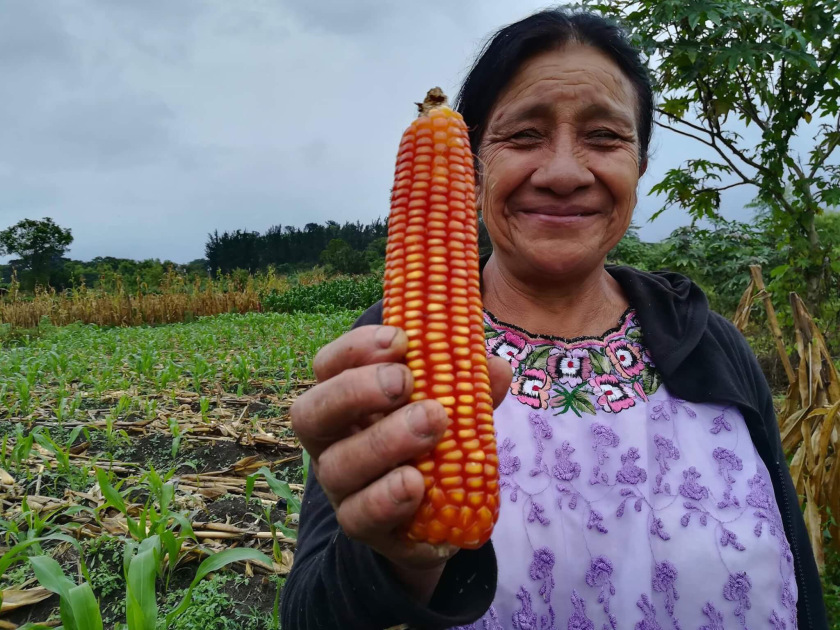In my Inga Alley Cropping post, I painted “slash and burn” farming as a short-sighted practice which destroys the fertility of rainforests in order to reap a few seasons of annual crops. I should clarify that a bit….
Not all slash-and-burn farming is short-sighted and destructive. Actually, for thousands of years many Maya cultures have managed extremely sustainable agricultural systems based on slash and burn practices. Skilled Maya farmers have known how to use fire as one stage in a careful and complex system of successional agroforestry managed over a cycle of 10 to 30 years.

Maya woman proudly holding a crop of her indigenous corn. Pachitilul, Guatemala.
Unfortunately the Green Revolution, combined with pressures of capitalism and population growth, the destruction of indigenous cultures and knowledge, and the diversion of family labor to off-farm wage work have pushed farmers away from these traditional practices and towards the more short-sighted and destructive slash and burn farming common in Central America today. While the initial stages of slashing and burning are practiced, the subsequent and critical stages of successional long-term management are being lost.
All around the world, it’s the same story. The Green Revolution of the 1960s promised an abundance of food using miraculous new chemical fertilizer and pesticides. At first it sounded like a utopia. Encouraged by powerful agribusiness corporations, many farmers around the world converted to the new paradigm. Unfortunately, 50 years later, we are realizing that those chemicals aren’t as miraculous as we were promised. Instead, we are learning that those chemicals have been destroying our soil fertility and trapping us in a cycle of dependence.
We no longer believe in the chemicals that agribusiness tries to sell us. You can feel that in the growing resentment towards companies like Monsanto and the growing momentum of the organic and local food movements. We’re ready to give up the chemicals and return to the practices of previous generations who knew how to maintain soil fertility and productive agricultural systems. Unfortunately, this knowledge is quickly fading along with the generations who hold them. We are rapidly losing agricultural knowledge based on thousands of years of research and development with nature. All around the world we are racing to preserve and promote that knowledge. Here at the Institute of Mesoamerican Permaculture in Guatemala, the local staff and community are working hard to use permaculture as a tool to preserve their cultural heritage, soil fertility and ancestral seeds. I’m hoping to learn as much as I can about their traditional milpa systems, as well as their model to preserve their indigenous culture in modern times, so that I can do the same and protect our cultural and agricultural practices back home in Hawaii Nei.
If you’re interested in learning more about sustainable traditional Maya milpa farming and how it differs from destructive slash and burn practices, check out this paper:
Nigh, R. and Diemont, S. A. (2013), The Maya milpa: fire and the legacy of living soil. Frontiers in Ecology and the Environment, 11: e45–e54. doi:10.1890/120344
Share this:




